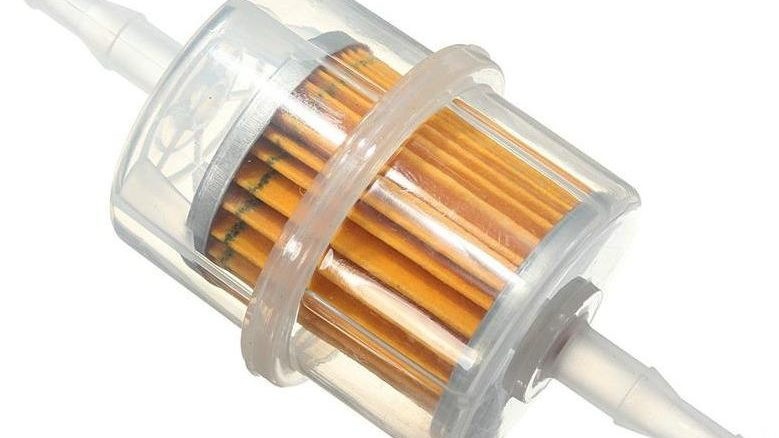
Oil viscosity
Content
- What is oil used for?
- What is oil viscosity
- Designations of engine oils according to SAE classification
- Designation of engine oils according to the API standard
- Kinematic and dynamic oil viscosity
- Characteristics of automotive oils
- Oil base and additives
- Mineral, synthetic and semi-synthetic engine oils
- What oil viscosity is best for your car engine
- Engine warm-up and engine oil viscosity
- Engine oil viscosity at operating temperatures
- What happens when the viscosity of the oil is above normal
- What happens when the viscosity of the oil is below normal
- Results

Oil viscosity is one of the most important parameters of automotive engine oil. Most car owners have heard about this parameter, seen the viscosity designation on oiler labels, but few people know what these letters and numbers mean and what they affect. In this article, we will talk about oil viscosity, viscosity designation systems, and how to choose the oil viscosity for your car engine.
What is oil used for?

Automotive oil guarantees the correct operation of various systems. It is used to reduce friction, cool, lubricate, transfer pressure to parts and components of the car, remove combustion products. The most difficult working conditions for motor oils. They should not lose their properties with instantaneous changes in thermal and mechanical loads, under the influence of atmospheric oxygen and aggressive substances formed during incomplete combustion of fuel.
Oil creates an oil film on the surface of rubbing parts and reduces wear, protects against rust, and reduces the impact of chemically active components formed during engine operation. Circulating in the crankcase, the oil removes heat, removes wear products (metal chips) from the contact zone of rubbing parts, seals the gaps between the cylinder walls and the piston group parts.
What is oil viscosity
Viscosity is the most important characteristic of engine oil, which depends on temperature. The oil should not be too viscous in cold weather so that the starter can turn the crankshaft and the oil pump can pump oil into the lubrication system. At high temperatures, the oil should not have a reduced viscosity to create an oil film between rubbing parts and provide the necessary pressure in the system.

Designations of engine oils according to SAE classification
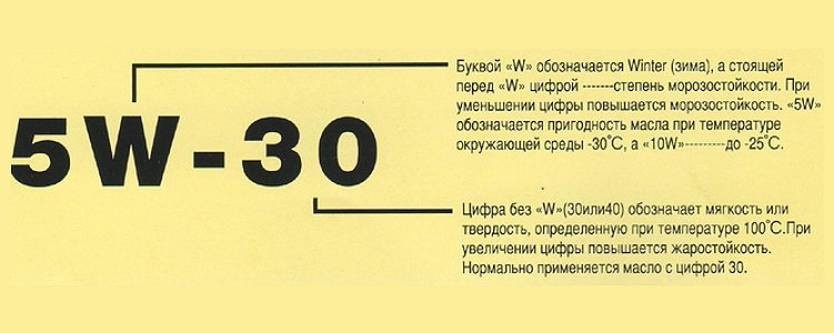
The SAE (American Society of Automotive Engineers) classification characterizes the viscosity and determines in which season the oil can be used. In the vehicle passport, the manufacturer regulates the appropriate markings.
Oils according to SAE classification are divided into:
- Winter: there is a letter on the stamp: W (winter) 0W, 5W, 10W, 15W, 20W, 25W;
- Summer — 20, 30, 40, 50, 60;
- All season: 0W-30, 5W-40, etc.

The number before the letter W in the engine oil designation indicates its low-temperature viscosity, i.e. the temperature threshold at which a car engine filled with this oil can start “cold”, and the oil pump will pump oil without the threat of dry friction from engine parts. For example, for 10W40 oil, the minimum temperature is -10 degrees (subtract 40 from the number before the W), and the critical temperature at which the starter can start the engine is -25 degrees (subtract 35 from the number in front of the W). Therefore, the lower the number before the W in the oil designation, the lower the air temperature for which it is designed.
The number after the letter W in the engine oil designation indicates its high-temperature viscosity, that is, the minimum and maximum viscosity of the oil at its operating temperatures (from 100 to 150 degrees). The higher the number after W, the higher the viscosity of that engine oil at operating temperatures.
The high-temperature viscosity that your car's engine oil must have is known only to its manufacturer, so it is recommended that you strictly adhere to the car manufacturer's requirements for engine oils, which are indicated in the instructions for your car.
Oils with different viscosity grades are recommended for use in different temperature conditions:
SAE 0W-30 — from -30° to +20°C;
SAE 0W-40 — from -30° to +35°C;
SAE 5W-30 — from -25° to +20°C;
SAE 5W-40 — from -25° to +35°C;
SAE 10W-30 — from -20° to +30°C;
SAE 10W-40 — from -20° to +35°C;
SAE 15W-40 — from -15° to +45°C;
SAE 20W-40 - -10° to +45°C.
Designation of engine oils according to the API standard
The API (American Petroleum Institute) standard specifies where the oil should be used. It consists of two Latin letters. The first letter S stands for gasoline, C for diesel. The second letter is the date the car was developed.
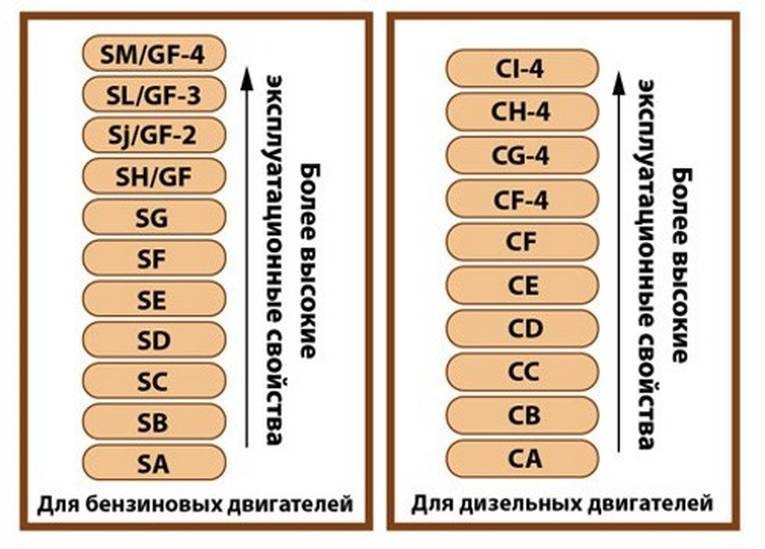
Gasoline engines:
- SC - cars that were produced before 1964;
- SD: cars produced between 1964 and 1968;
- SE - copies that were produced in 1969-1972;
- SF - cars that were produced in the period 1973-1988;
- SG - cars developed in 1989-1994 for operation in difficult conditions;
- Sh - cars developed in 1995-1996 for severe operating conditions;
- SJ - copies, with a release date of 1997-2000, with the best energy saving;
- SL - cars, with the start of production in 2001-2003, and with a long service life;
- SM - cars produced since 2004;
- SL+ improved oxidation resistance.
For diesel engines:
- SV - cars produced before 1961, high sulfur content in the fuel;
- SS - cars produced before 1983, working in difficult conditions;
- CD - cars manufactured before 1990, which had to work in difficult conditions and with a large amount of sulfur in the fuel;
- CE - cars manufactured before 1990 and having a turbine engine;
- CF - cars produced since 1990, with a turbine;
- CG-4 - copies produced since 1994, with a turbine;
- CH-4 - cars since 1998, according to the toxicity standards adopted in the United States;
- KI-4 - turbocharged cars with an EGR valve;
- CI-4 plus - similar to the previous one, under the high US toxicity standards.
Kinematic and dynamic oil viscosity
To determine the quality of the oil, its kinematic and dynamic viscosity is determined.
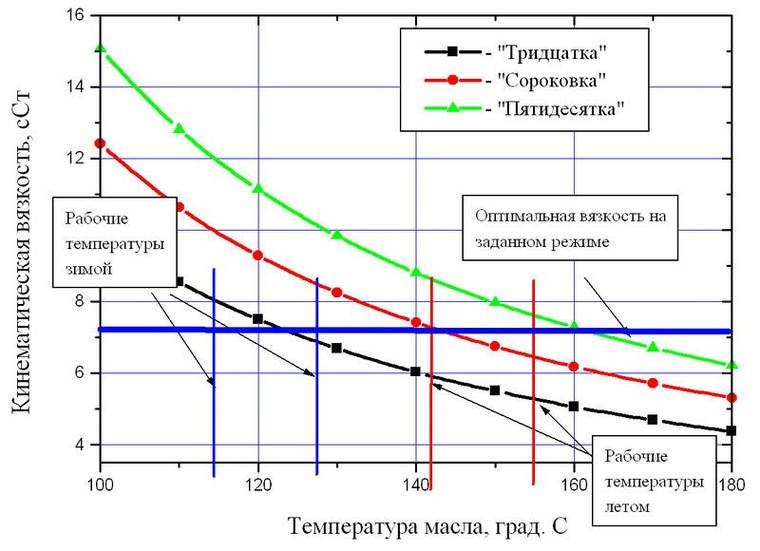
Kinematic viscosity is an indicator of fluidity at normal (+40°C) and elevated (+100°C) temperatures. Determined using a capillary viscometer. To determine it, the time for which the oil flows at given temperatures is considered. Measured in mm2/sec.
Dynamic viscosity is an indicator that determines the reaction of a lubricant in a real load simulator - a rotational viscometer. The device simulates real loads on the engine, taking into account the pressure in the lines and a temperature of +150 ° C, and controls how the lubricating fluid behaves, how its viscosity changes precisely at the moments of load.
Characteristics of automotive oils
- Flash point;
- pour point;
- viscosity index;
- alkaline number;
- acid number.
The flash point is a value that characterizes the presence of light fractions in the oil, which evaporate and burn very quickly, deteriorating the quality of the oil. The minimum flash point must not be below 220°C.
The pour point is the value at which the oil loses its fluidity. The temperature indicates the moment of paraffin crystallization and complete solidification of the oil.
viscosity index - characterizes the dependence of oil viscosity on temperature changes. The higher this figure, the greater the operating temperature range of the oil. Products with a low viscosity index only allow the engine to operate within a narrow temperature range. Since when heated, they become too liquid and cease to lubricate, and when cooled, they quickly thicken.
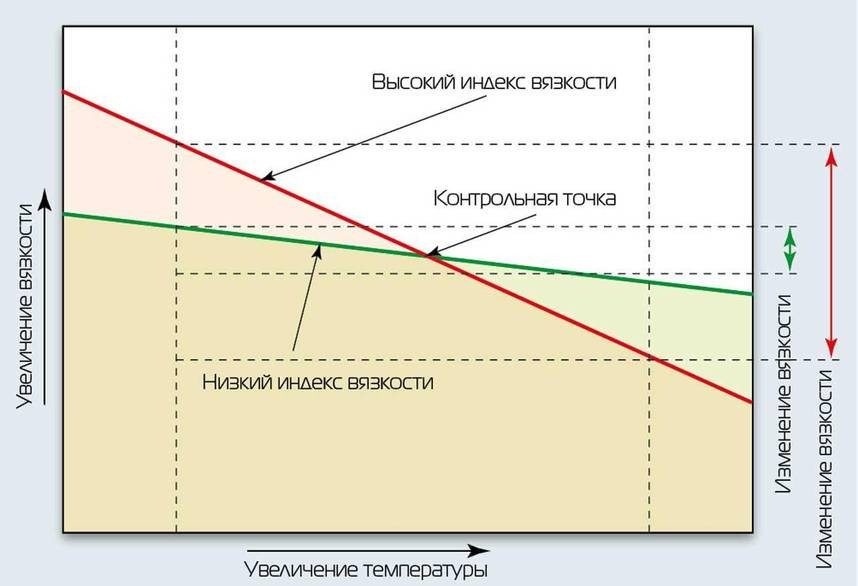
The base number (TBN) indicates the amount of alkaline substances (potassium hydroxide) in one gram of engine oil. Unit of measurement mgKOH/g. It is present in the motor fluid in the form of detergent dispersant additives. Its presence helps to neutralize harmful acids and fight deposits that appear during engine operation. Over time, TBN drops. A large drop in the base number causes corrosion and dirt in the crankcase. The biggest contributor to BN reduction is the presence of sulfur in the fuel. Therefore, diesel engine oils, where sulfur is present in greater amounts, should have a higher TBN.
The acid number (TAN) characterizes the presence of oxidation products as a result of long-term operation and overheating of the engine fluid. Its increase indicates a decrease in the service life of the oil.
Oil base and additives

Automotive oils are made up of base oil and additives. Additives are special substances that are added to the oil to improve its properties.
Base oils:
- mineral;
- hydrocracking;
- semi-synthetics (a mixture of mineral water and synthetics);
- synthetic (targeted synthesis).
In modern oils, the share of additives is 15-20%.
According to the purpose of the supplements are divided into:
- detergents and dispersants: they do not allow small residues (resins, bitumen, etc.) to stick together and, having alkali in their composition, they neutralize acids and prevent sludge deposits from compacting;
- anti-wear - creates a protective layer on metal parts and reduces wear of rubbing surfaces by reducing friction;
- index - increases the viscosity of the oil at high temperatures, and at low temperatures increases its fluidity;
- defoamers - reduce the formation of foam (a mixture of air and oil), which impairs heat dissipation and the quality of the lubricant;
- friction modifiers: reduce the coefficient of friction between metal parts.
Mineral, synthetic and semi-synthetic engine oils
Oil is a mixture of hydrocarbons with a specific carbon structure. They can join in long chains or branch out. The longer and straighter the carbon chains, the better the oil.
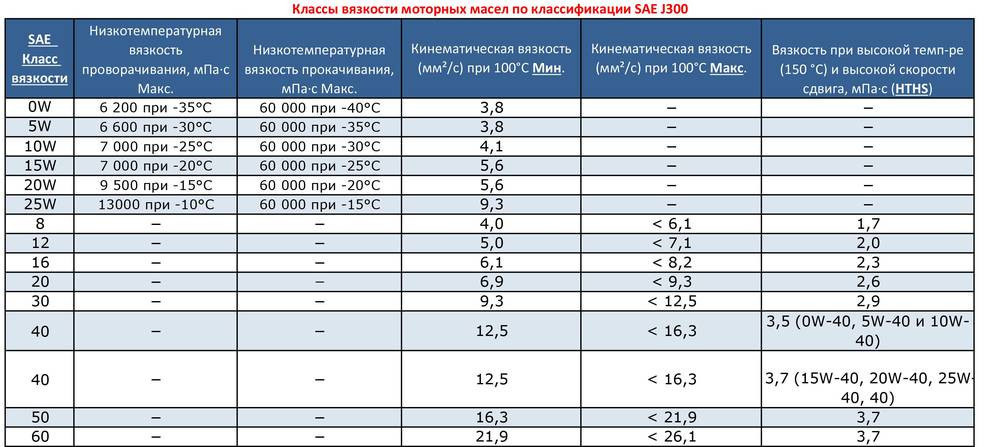
Mineral oils are obtained from petroleum in several ways:
- the simplest way is the distillation of oil with the extraction of solvents from oil products;
- a more complex method - hydrocracking;
- even more complex is catalytic hydrocracking.
Synthetic oil is obtained from natural gas by increasing the length of hydrocarbon chains. This way it's easier to get longer strings. "Synthetics" - much better than mineral oils, three to five times. Its only drawback is its very high price.
"Semi-synthetics" - a mixture of mineral and synthetic oils.
What oil viscosity is best for your car engine
Only the viscosity indicated in the service book is suitable for your car. All engine parameters are tested by the manufacturer, engine oil is selected taking into account all parameters and operating modes.
Engine warm-up and engine oil viscosity
When the car starts, the engine oil is cold and viscous. Therefore, the thickness of the oil film in the gaps is large and the coefficient of friction at this point is high. When the engine warms up, the oil heats up quickly and goes into operation. That is why manufacturers do not recommend immediately loading the motor (starting with movement without high-quality warm-up) in severe frosts.
Engine oil viscosity at operating temperatures
Under high load conditions, the coefficient of friction increases and the temperature rises. Due to the high temperature, the oil thins and the film thickness decreases. The coefficient of friction decreases and the oil cools. That is, the temperature and film thickness vary within the limits strictly defined by the manufacturer. It is this mode that will allow the oil to serve its purpose well.
What happens when the viscosity of the oil is above normal
If the viscosity is higher than normal, even after the engine has warmed up, the oil viscosity will not drop to the value calculated by the engineer. Under normal load conditions, the engine temperature will rise until the viscosity returns to normal. Hence the conclusion follows: the operating temperature during the operation of poorly selected engine oil will constantly increase, which increases the wear of engine parts and assemblies.
Under heavy load: During emergency acceleration or on a long, steep hill, the engine temperature will rise even more and may exceed the temperature at which the oil maintains its operating properties. It will oxidize and varnish, soot and acids will form.
Another disadvantage of an oil that is too viscous is that some of the engine power will be lost due to the high pumping forces in the system.
What happens when the viscosity of the oil is below normal
The viscosity of the oil below the norm will not bring anything good to the engine, the oil film in the gaps will be below the norm, and it simply will not have time to remove heat from the friction zone. Therefore, at these points under load, the oil will burn. Debris and metal shavings between the piston and cylinder can cause the engine to seize.
Oil that is too thin in a new engine, when the gaps are not too wide, will work, but when the engine is no longer new and the gaps increase on their own, the oil burning process will accelerate.
A thin film of oil in the gaps will not be able to provide normal compression, and part of the combustion products of gasoline will get into the oil. Power drops, operating temperature rises, the process of abrasion and oil burnout accelerates.
Such oils are used in special equipment, the modes of which are designed to work with these oils.
Results
Oils of the same viscosity grade, having the same characteristics, produced by a company included in the "Big Five", and having the same oil base, as a rule, do not enter into an aggressive interaction. But if you do not want big problems, it is better to add no more than 10-15% of the total volume. In the near future, after filling the oil, it is better to change the oil completely.
Before choosing an oil, you should find out:
- date of manufacture of the car;
- the presence or absence of forcing;
- the presence of a turbine;
- engine operating conditions (city, off-road, sports competitions, cargo transportation);
- minimum ambient temperature;
- the degree of engine wear;
- the degree of compatibility of the engine and oil in your car.
To understand when to change the oil, you need to focus on the documentation for the car. For some cars, the periods are long (30-000 km). For Russia, taking into account fuel quality, operating conditions and severe weather conditions, replacement should be carried out after 50 - 000 km.
It is required to periodically control the quality and quantity of oil. Pay attention to their appearance. Vehicle mileage and engine hours (running time) may not match. While in a traffic jam, the engine runs in a loaded thermal mode, but the odometer does not spin (the car does not drive). As a result, the car traveled little, and the engine worked very well. In this case, it is better to change the oil earlier, without waiting for the required mileage on the odometer.
